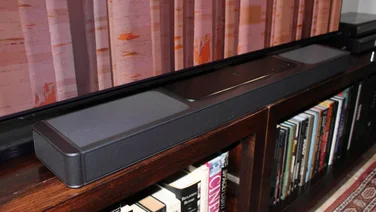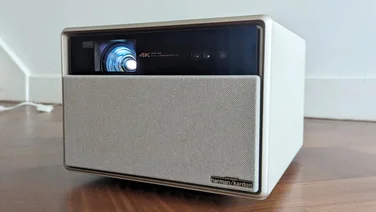To help us provide you with free impartial advice, we may earn a commission if you buy through links on our site. Learn more
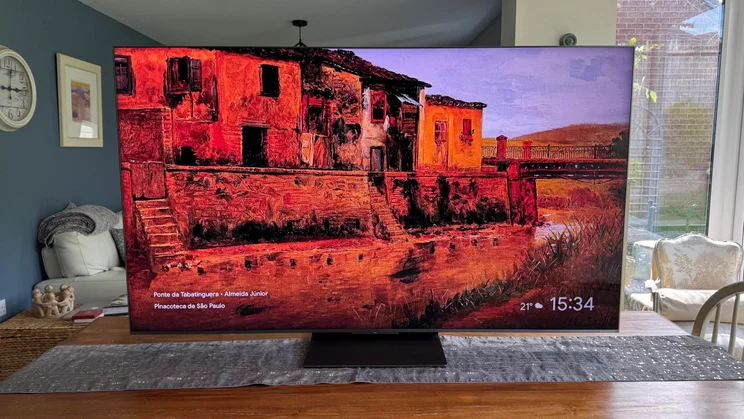
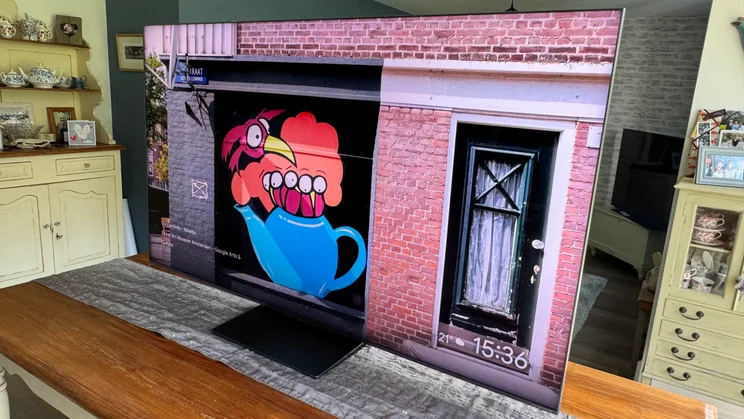
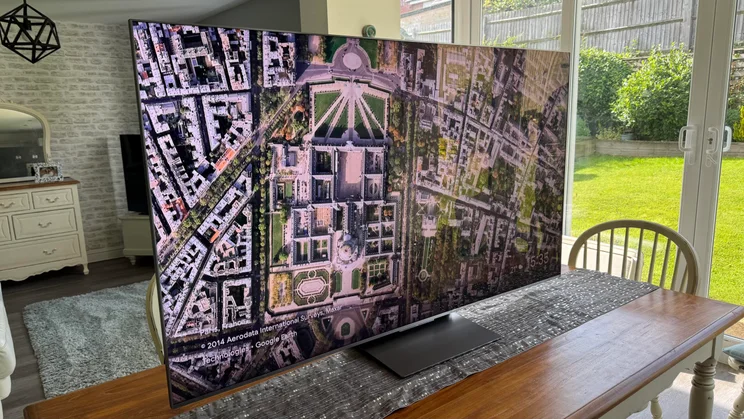
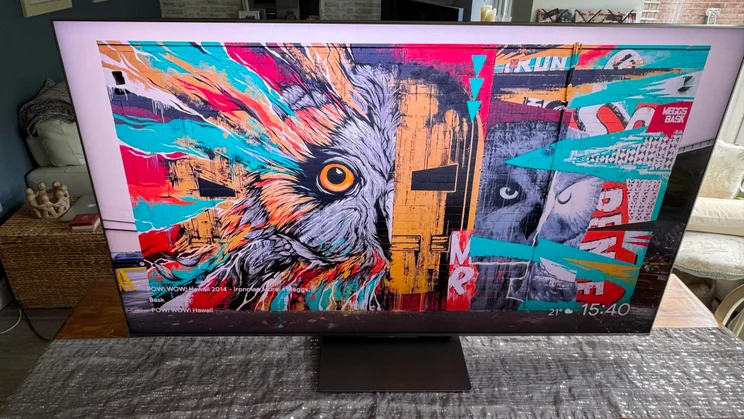
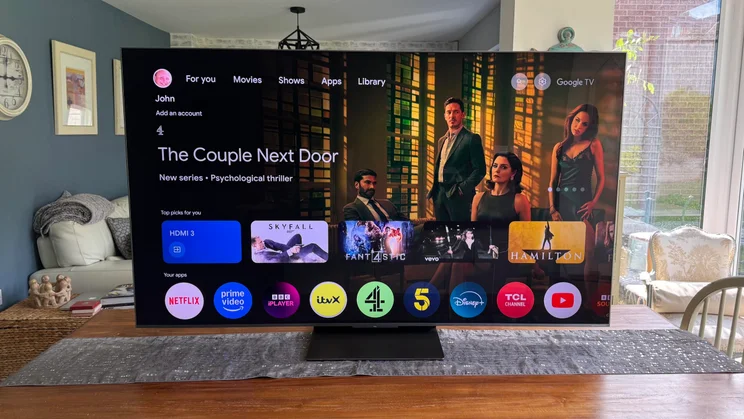
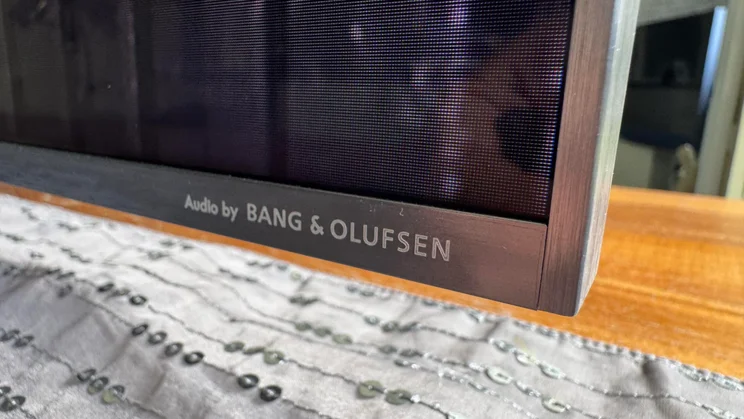
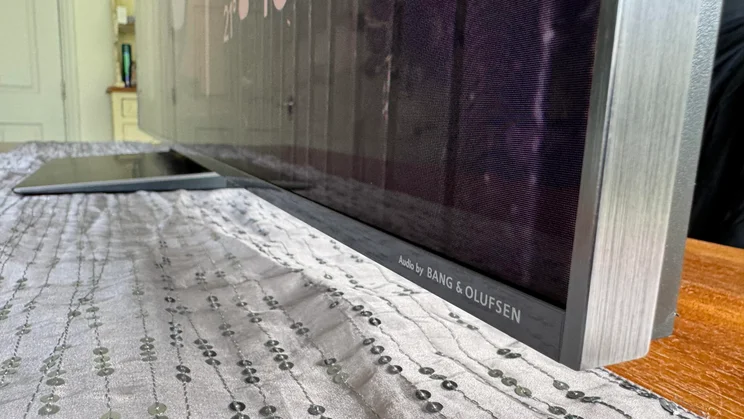
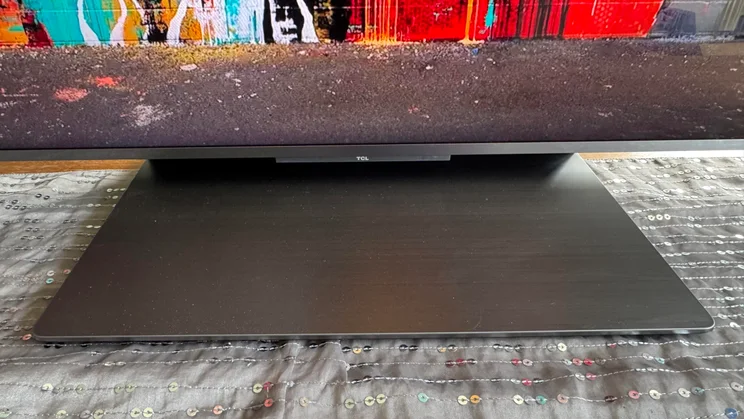
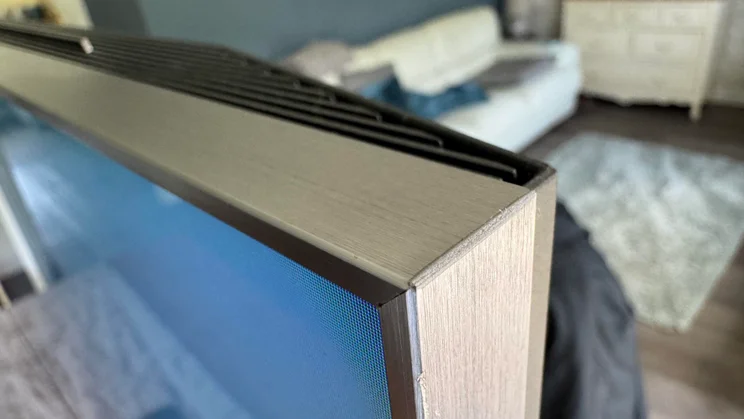
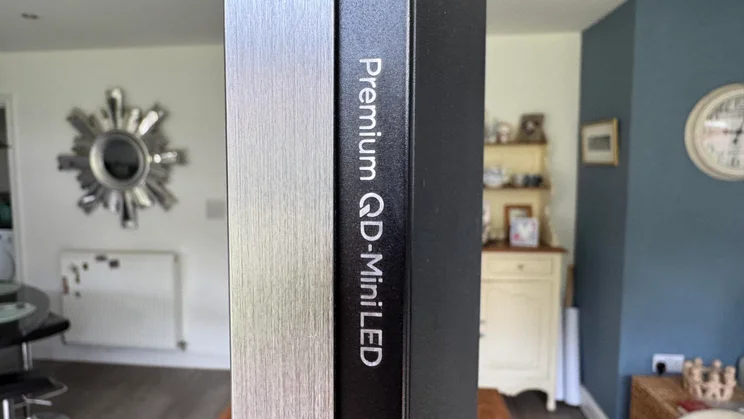
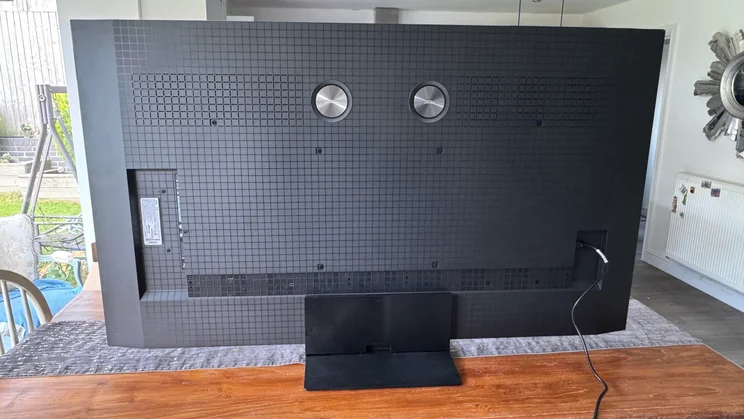
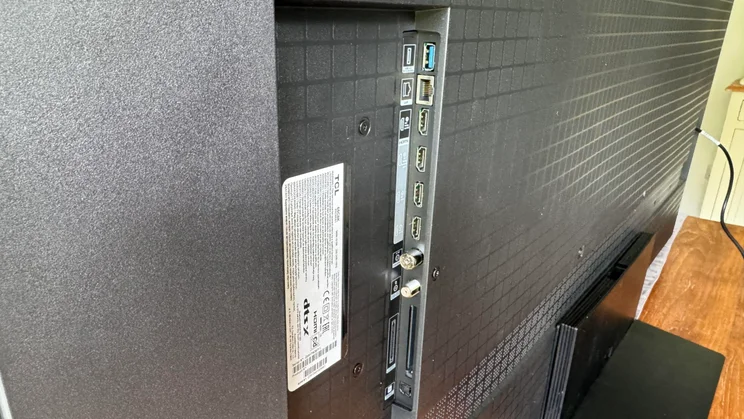
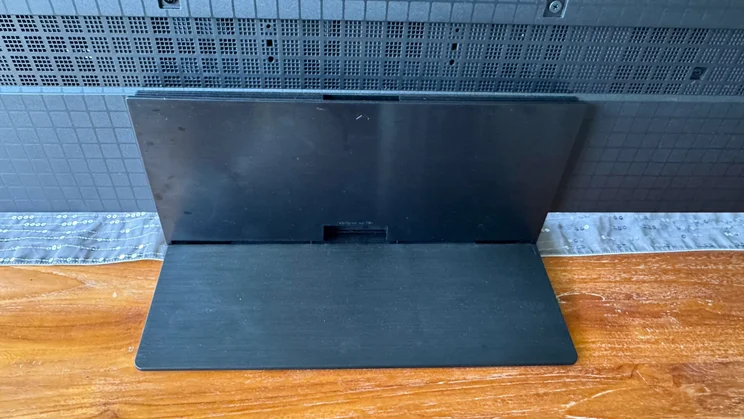
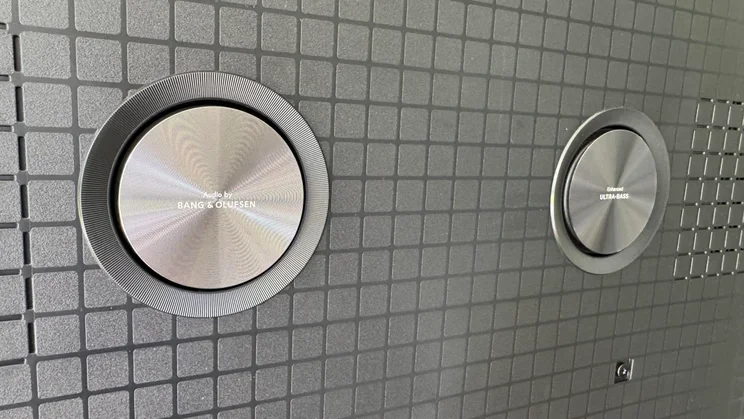
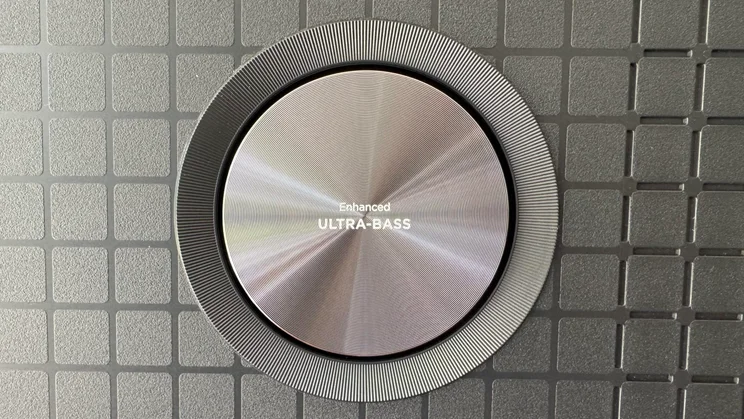
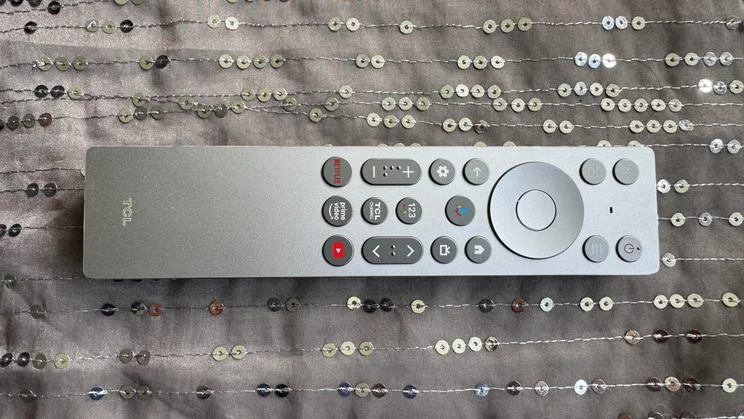
- Fantastically bright and contrast-rich pictures
- Great value for what’s on offer
- Strong gaming performance
- Only two full-bore HDMI 2.1 ports
- No Freely or Freeview Play apps
- Sound lacks a bit of beef
TCL has enjoyed a very lucrative and critically successful few years on the back of a simple but blindingly effective policy of delivering good all-round TVs at eye-catchingly affordable prices.
The TCL C8K Mini LED, though, suggests that TCL is out to create a new narrative around itself in which it’s capable of delivering huge amounts of genuine technical innovation in a single generation, and collaborating with the AV world’s most esteemed brands. All while still keeping the pressure on its rivals on the value front.
TCL C8K review: Key specifications
| Screen sizes available | 65in 65C8K, 75in 75C8K, 85in 85C8K and 98in 98C8K |
| Panel type | VA-type Quantum Dot LCD, with direct LED lighting and local dimming |
| Resolution | 4K/UHD (3,840 x 2,160) |
| Refresh rates | Up to 144Hz, 288Hz through DLG technology |
| HDR formats | HDR10, HLG, Dolby Vision, HDR10+ |
| Audio enhancement | Bang & Olufsen-designed speaker system |
| HDMI inputs | 2 x full-spec HDMI 2.1 (one with eARC), 2 x HDMI 2.0 |
| Freeview Play compatibility | No |
| Tuners | Terrestrial Freeview HD |
| Gaming features | ALLM, 4K/144Hz, Dolby Vision Game mode, VRR, AMD FreeSync Premium Pro |
| Wireless connectivity | Bluetooth, Wi-Fi |
| Smart assistants | Google Assistant |
| Smart platform | Google TV |
What you need to know
The C8K sits at the pinnacle of TCL’s 2025 TV range in the UK as we’re not getting the C9K or X11K on these shores.
It brings on board a whole host of hardware and software innovations, including a new audio system designed with premium Danish AV brand Bang & Olufsen, and a new suite of “Halo Control” technologies designed to tackle the sort of backlight inconsistencies that are arguably LCD TVs’ biggest problem.
















Despite essentially developing a whole new LCD panel design for the C8K, TCL hasn’t gone crazy on the price front. The new range is a touch more expensive than its predecessor, but still slots into the wider TV world’s mid-range zone rather than slipping into the high end. If all the new tech that TCL has included translates to the sort of picture and sound quality leap we’re hoping for, it’s a TV that will provide great value for money.
Price and competition
The 65in C8K I’m reviewing here costs £1,599. The 75in, 85in and 98in models are arriving late to the UK, so we don’t have pricing just yet, but elsewhere in Europe they cost €1,799, €2,299 and €3,299 respectively. For such a feature-rich and, as we’ll see, top-performing TV, that’s superb value.
Key rivals in the same sort of price arena would be Samsung’s S90F, which is slightly more expensive but uses the brand’s latest Quantum Dot OLED panel technology, and the LG QNED93. Or, at any rate, the 65in model, which is the only QNED93 model to use contrast-rich VA technology rather than the IPS alternative.
Design, connections and control
TCL hasn’t just completely revamped the C8K’s innards; its exterior look also enjoys a welcome step up over that of its predecessor. The frame around the screen enjoys a premium-looking silver brushed metallic finish, and its left, right and top edges are exceptionally narrow. New ‘ZeroBorder’ technology means that the picture pushes right up to this ultra-slim frame, without any internal black border.
















The C8K is trim around the back by today’s standards, but TCL has at least tried to style its rear chunkiness out with such touches as gradual angling back of the rear from the left and right edges, and a crosshatch etched into the rear panel. The screen sits on a well-built and attractively finished metallic plinth stand, and can be set low down just above the stand, or slightly higher if you want to fit a soundbar under the screen.
The C8K’s connections are headed up by four HDMIs, but there are also a pair of USB-A ports, a LAN port, an optical digital audio output and the inevitable RF input. Only two of the HDMIs support the full HDMI 2.1 data bandwidth that enables the latest cutting-edge gaming features, but the same situation applies to many other premium TVs. Realistically, most households won’t own more than two 4K/120Hz-capable gaming devices.
The C8K ships with an attractive remote control finished in a brushed silver metal similar to the finish of the screen surround. Buttons on this remote are well organised and reasonably well spread out, and they’re gently backlit, too.
















You can also control many aspects of the TV or initiate content searches by talking to the integrated Google Assistant voice recognition system.
Smart TV platform
As with all recent premium TCL TVs, the C8K turns to Google TV for its smart features. Google TV isn’t the slickest or most helpful smart system when it comes to recommending relevant content or allowing you to customise its layout, but it is packed with streaming apps that include all the global big hitters.
















Google TV has a long-running blind spot when it comes to some of the UK’s most popular terrestrial broadcaster catch-up apps, but TCL has worked around this to ensure that the BBC iPlayer, ITVX, All4 and My5 apps are all present and correct. Though you don’t get either of the Freeview Play or Freely apps.
Image quality
Since the bulk of the innovations TCL has developed for the C8K have their most dramatic effect on high dynamic range pictures, I’ll leave a rundown of the TV’s new tech for the HDR section of the review. This doesn’t mean that the C8K isn’t an excellent HD/SDR performer, though. On the contrary, it’s ridiculously good for the money.
Right away, I noticed how impressive its contrast looked, combining startlingly inky black colours with striking bright highlights and an almost OLED-like level of light control. There’s neither any general greyness over dark areas, nor haloing of light around stand-out bright highlights. This remains true even if you use the TV’s Standard picture preset, which takes a relatively aggressive approach to SDR.
The C8K’s default Standard preset is much-improved from its predecessors and reveals a leap in TCL’s colour performance that finds tones looking more vibrant but also, more importantly, both more balanced and tonally subtle. Even in the most heavily saturated picture areas, and especially when it comes to skin tones.
















This colour detail is matched by excellent texturing and crispness with bright SD or HD scenes, showing that TCL’s latest AI-bolstered processing is doing a more than solid job of upscaling SD and HD to the screen’s native 4K resolution.
So effective, balanced and full of nuance is the Standard mode’s handling of SDR source images, that I can see many households using it for pretty much all non-game viewing – even though it’s measurably not accurate to established video standards.
Despite the C8K’s Standard mode sticking with a fairly restrained 200cd/m2 or so brightness baseline, 2-point and multipoint greyscale tests using Portrait Display’s Calman Ultimate software and G1 signal generator, in conjunction with a Klein K10-A colourimeter, show Delta E 2000 average errors of 13.9 and 13.7, respectively. These results are far beyond the score of three or below, where errors are considered to be invisible to the human eye.
















Calman’s ColourChecker, saturation Sweep and luminance Sweep tests in Standard mode recorded average errors of 9.4, 12.5 and 10.2, as well, though the Calman tests do reveal the C8K capable of covering a full 100% of the Rec 709 colour spectrum.
AV purists will be delighted to learn, though, that the C8K’s Filmmaker Mode delivers some of the most accurate Calman Ultimate test results I’ve seen. The 2-point and multipoint greyscale tests record average Delta E 2000 errors of just 1.5 and 1.2, and things get even better with the ColourChecker, saturation sweep and luminance sweep tests, with averaged Delta E 2000 errors of just 1.2, 1.1 and 1.6.
It’s worth adding, too, that the Filmmaker Mode doesn’t just measure well. It’s also seriously easy on the subjective eye, delivering all the subtlety, balance and stability this mode is designed to show without its processing-lite approach exposing glaring contrast, motion or backlight uniformity limitations in the panel.
HDR performance
As promised, let’s reflect on some of the intriguing technical advances TCL has delivered for its latest premium LCD TV range. At the heart of everything is a new panel design TCL dubs “CrystGlow WHVA”.
This includes such innovations as an anodised ceramic film element and next-gen gate on array technology to improve image stability by a claimed 40%. Optical materials with improved reflectivity are claimed to boost luminous efficiency by 97%, and there’s an aerospace-grade aluminium alloy bezel that’s claimed to make the TV’s structure hundreds of times more rigid.
The new panel is also responsible for the borderless images I noted earlier, and is claimed to increase colour viewing angles by 40% over regular VA LCD panels. A “nano” low reflection film over the screen reduces onscreen reflections without the divisive matt finish or ambient light contrast compromises that can affect some rival anti-glare technologies, and contrast is rated to a very high (for LCD tech) native ratio of 7,000:1.
















Then there’s the C8K’s key new Halo Control technology. This refers to a suite of innovations designed to deliver extreme contrast without the backlight clouding and inconsistencies usually associated with high-contrast LCD screens. These innovations are numerous and include a local dimming system that operates across a huge 1,680 separately controlled mini LED lighting zones, a new super-condensed micro lens over each Mini LED light element and more powerful light-emitting chips.
On top of those things, a faster transient response means there’s practically no delay in the screen responding to even major shifts in brightness; a new “Micro-OD| system that practically eliminates the optical distance between the backlights and the LCD panel to further tighten up control of where light goes, and a fancy-sounding Dynamic Lighting Bionic Algorithm that combines an understanding of human perception with pixel-level picture analysis to optimise contrast and detail.
TCL has managed to get remarkable results out of all this new tech at the first time of asking. Two often incompatible things hit you about right away with the C8K’s HDR pictures: spectacular brightness, and remarkably deep, clean and consistent black colours.
Calman Ultimate measurements record peak brightness in the C8K’s Standard preset of just over 4,000cd/m2 on both 5% and 10% test windows. This puts the C8K up there in brightness terms with only a handful of more expensive TVs. And, unlike the new generation of ultra-bright OLED TVs, the C8K still holds on to 770cd/m2 or so of brightness even on a 100% white HDR window. In Standard mode, the C8K delivers the bright end of HDR’s glorious appeal in truly spectacular fashion.
















The Filmmaker Mode is a little more restrained, topping out at around 3,420cd/m2 on a 10% window. But it still holds up at more than 1500cd/m2 for most of the testing window sizes, never drops below 760cd/m2 even with full-screen bright HDR images, and still feels extremely intense by Filmmaker Mode standards.
The remarkable ease with which the C8K delivers all this dramatic brightness can be appreciated, too, in the amount of subtle shading and detailing retained in even the lightest highlights of HDR images. And in the way that neither the darkest nor brightest image elements ever feel too extreme or dislocated from the rest of the picture.
Talking of dark extremes, the C8K produces some of the deepest black colours the LCD TV world has seen. Properly inky, almost OLED-like stuff, despite how bright the screen can get. What’s more, that Halo Control technology really does work, borderline miraculously enabling TCL to deliver bright highlights against dark backdrops without either heavily compromising the brightness of the light highlight or throwing up lots of backlight pollution around it.
I’m not saying there’s absolutely no haloing. It occasionally appears very faintly in the black bars above and below very wide aspect ratio films, and some very complex images containing a mix of multiple bright highlights against dark backdrops can look a touch cloudy. But these instances are both rare and so faint that you may well never notice them.
















The C8K delivers an outstanding but controlled mix of boldness and vibrancy in its Standard HDR picture preset that’s brilliantly suited to bright room viewing, but can also adapt to a remarkably accurate HDR performance in its Filmmaker mode if that’s what you’re after.
Putting some numbers on this with further Calman Ultimate tests, in Standard mode ColorChecker Analysis tests generate a without-luminance Delta E 2000 average error of 8.15 (which more than doubles with luminance taken into account), while BT2020 and DCI-P3 saturation sweeps record errors of 26.15 and 25.36. These are high errors, but quite typical of Standard or similar HDR presets, and crucially, the C8K Standard mode pictures still feel balanced.
In Filmmaker Mode, the C8K turns in phenomenally accurate HDR Delta E 2000 average errors of just 1.8 on a multipoint greyscale test, a phenomenal 0.85 on Calman’s ColorChecker HDR test, 1.13 on a BT.2020 saturation sweep, and just 0.85 on a DCI-P3 sweep. This is as good as it gets in the HDR world.
The C8K can cover a strong 81.81% of the BT.2020 colour gamut and 97.45% of the DCI-P3 gamut, too, and as one further big HDR attraction, it can play every key HDR format, including both of the advanced HDR10+ and Dolby Vision formats.
















There are a couple of niggles to report, inevitably. In Standard mode, the very brightest colours can become slightly pale, though this never happens in the same areas in the slightly less bright Filmmaker Mode. Also, while detail in dark scenes is generally good, now and then some dark shades and textures in complex dark shots will become crushed out of the picture. Finally, the default Medium setting of TCL’s latest motion processing is a bit heavy-handed, causing pictures to look processed. Switching the processing to low or off fixes this, though, without judder coming on too strong.
Overall, the C8K pictures manage to deliver both awesome spectacle and excellent subtlety and accuracy while throwing up hardly any unwanted distractions.
To test the TCL C8K, I used Portrait Displays Calman colour calibration software.
Gaming
Aside from the fact that only two of its four HDMIs deliver a full suite of cutting-edge gaming features, the C8K is an excellent gaming TV. Its support for native refresh rates up to 144Hz is outstanding, especially as it’s bolstered by support for variable refresh rates that includes the AMD Freesync system. The support for 288Hz using Dual Line Gate technology (which halves image resolution to simulate the higher frame rate) is interesting, but won’t be of practical use to most gamers.
The dedicated game menu the C8K makes available when it detects a game source is well-presented too, and the information and features available there (including 21:9 and even 32:9 aspect ratio options) are genuinely useful.
















The high frame rate and VRR support contribute to a fluid, immersive and responsive gaming experience, even though input lag with 60Hz titles is a fraction – but only a fraction – higher than it is with a few rival premium TVs.
Even though the C8K’s backlight controls seem to be slightly toned down with the fast-response Game preset selected, the TV’s brightness and contrast talents remain explosively enjoyable with game graphics, and the above-average viewing angles will be helpful for game nights where a bunch of mates are crowding round the TV.
Sound quality
The big news here is TCL bringing in no less a premium brand than Bang & Olufsen to collaborate on the C8K’s sound system. The results aren’t an unmitigated success, however.
On the plus side, there’s a much more refined, clean and detailed quality to the C8K’s sound than there was with their already decent-sounding predecessors, and these details are painted with good placement accuracy into a wide soundstage that includes a genuine sense of height as well as width.
















Vocals are always clear and also benefit from the system’s ability to make sounds seem to come from the right place on the screen. There’s a much busier and more hi-fi feel to film and TV soundtracks than I’ve heard from a TCL TV before.
Bass, though, isn’t as prominent or as deep as I’d like, meaning action scenes can feel a bit thin while the treble end of the sonic spectrum sound a bit bright and over-dominant. Sometimes to the extent that background and ambient sounds can get distractingly too much prominence in the mix.
Verdict
The TCL C8K is as much a statement from TCL as it is an outstanding TV. The way it leverages a whole bunch of LCD TV innovations to deliver a genuinely premium design and outstanding picture performance for video and gaming fans alike, without costing the earth, is as great news for consumers as it is bad news for rival TV brands.



